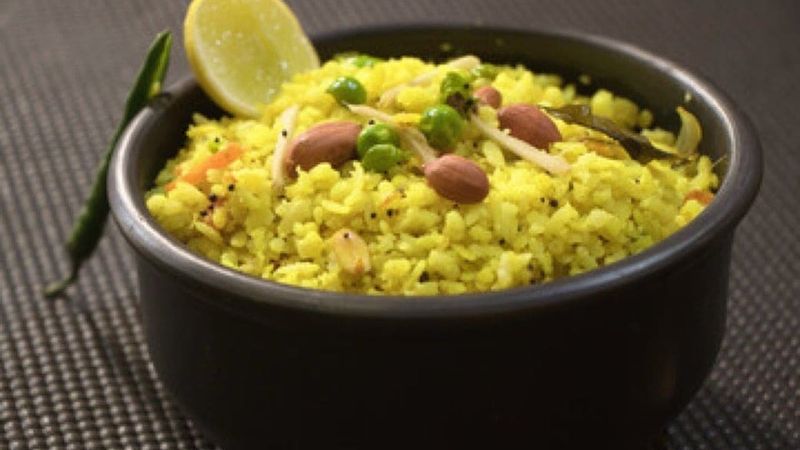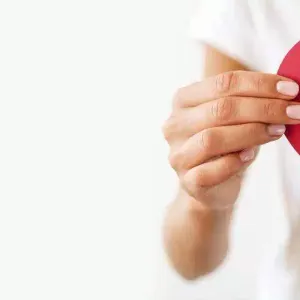

Our Review Process
Our articles undergo extensive medical review by board-certified practitioners to confirm that all factual inferences with respect to medical conditions, symptoms, treatments, and protocols are legitimate, canonical, and adhere to current guidelines and the latest discoveries. Read more.
Our Editorial Team
Shifa Fatima, MSc.
Author
Dr. Apoorva T, MHM.
MEDICAL ADVISOR
Poha Good Or Bad For Diabetes
Poha, also known as flattened rice, is one of the most popular dishes in India. It is usually eaten for breakfast, or as an evening snack. Now, the question is: is poha good for diabetes? The answer is, yes, it is. This is because poha steadily releases sugar into the bloodstream, avoiding a sudden spike in blood sugar levels.
It is also considered a good probiotic food. About 100 g of poha contains 6.1 mg of iron and 3.3 g of fibre. It is naturally gluten-free and a rich source of carbohydrates. To enhance the nutritive contents in your poha, you can squeeze a lemon and add some lemon juice to it. It is a rich source of probiotics and retains all of its good microbial growth. It also is a rich source of carbohydrates and gives energy. Poha contains 76.9 percent of natural carbohydrates and approximately 23 percent of natural fats. Poha is a great and healthy option for a person suffering from diabetes.
Table of Contents
Poha Nutritional Profile
Poha is one of the stable Indian snacks that we prefer to eat for breakfast, evening time with tea, or sometimes even dinner. However, is poha good for diabetics is a question that needs to be asked before making it one of the regular meals in a household that has a person with T1D or T2D. It has several nutritional values and is therefore considered healthy for people to consume. A person living with diabetes, however, needs to consider many more aspects before adding a certain food or ingredient to the daily diet. Looking at the poha nutritional value profile to check the contents going into the body would provide a better perspective for a healthy decision.
100 grams of poha contains:
- Energy – 110kcal
- Carbs – 18.8g
- Fiber – 1g
- Sugars – 0.5g
- Protein – 2.34g
- Fat – 2.87g
- Sodium – 210mg
- Potassium – 117mg
- Vitamin A – 67.6mcg
- Vitamin C – 1.9 mg
- Iron – 6.1mg
- Phosphorous – 79.7mg
- Calcium – 13.7mg
- Magnesium – 32.9mg
These days, with the availability of red poha and other forms of poha, it can be added to the diet chart of a person with diabetes without much concern. Also know more about diabetes diet chart
Glycemic Index Of Poha
Considering one of the tastiest and easily available dishes in the country, a person living with diabetes would not want to give it up! The best way to understand whether a food ingredient is healthy for a person with diabetes would be by considering its glycemic index. Poha is one of the most popular breakfasts and snack items in the country. It is an excellent meal that helps a person feel energetic throughout the day. It is simple to make and poha for diabetes is also considered to be a good option as it has higher levels of iron and carbs. Also know about pre diabetes levels.
However, one vital consideration before a person with diabetes consumes any kind of food would be its glycemic index. The puffed rice glycemic index is between 38 and 64. This is lower than other compounds of rice in general as the starch granules are less refined than the ones in white rice or brown rice. This means that they can break down easily and more slowly in the digestive system. Since the poha glycemic index is not high, you will not have to worry about erratic and dramatic blood sugar spikes in the body.
Benefits of Poha
There are innumerable benefits of eating poha. It keeps your skin healthy and sharpens your brain, due to the Vitamin B present in it. It also protects the skin from oxidative skin damage and helps prevent wrinkles. Poha is also good for hair due to proteins and antioxidants and helps in weight loss. Many ask, "Can a diabetes patient eat poha?'' or ''Can we eat poha in diabetes?'' The answer is, yes, they can, as it helps regulate sugar in the bloodstream and keeps the sugar level in check. Also know about benefits of curd with sugar

Benefits of Poha in Diabetes
Poha is a probiotic food and helps in losing weight. It is rich in fibre and antioxidants. It manages the sugar level in the blood and also boosts the body’s immune system. Poha is better than rice for people with diabetes, due to less starch present in it. Your intestines would not have to work excessively to get it digested. It is a rich source of iron and helps in RBC development. Not only for people with diabetes, but it also has amazing benefits for people suffering from anaemia. It helps in the synthesis of haemoglobin and proper RBC development.
Do you know why sugar gets released into the bloodstream slowly and steadily? This is because poha contains a lot of fibre, and slow digestion of fibre leads to the slow release of sugar into the bloodstream. This answers your question if poha is good for diabetes.
Ways to Consume Poha for Diabetes
Since poha is good for diabetes owing to the abundant vitamins and minerals it provides to the person, it is also safe for people with diabetes when eaten in moderate amounts. Often, it is a dish that is consumed for breakfast when it is cooked fresh. However, if you are tired of the same-old way to cook and consume poha, you can also choose to divulge in some other recipes:
1. Poha Dhokla – Use ½ cup crushed poha, ½ cup semolina, 1 cup of curd, 1 cup of water, and 1 teaspoon of green chili paste in a bowl. You can add salt and spice as per your taste. Mix them well until it becomes a nice batter without lumps and cook like you would cook any other dhokla.
2. Poha dosa – This dish can be made if you switch your regular rice with a cup of poha to prepare your dosa batter.
3. Tamarind poha – Like any other poha recipe, you can add a twist by mixing tamarind water and sambar powder. The tangy taste will leave you wanting more
4. Poha with milk – One of the most common ways to consume poha would be by soaking it in water for 5 minutes and then adding hot milk over it. Mix them so that they don’t form lumps.
5. Add nuts, chopped onions, or tomatoes - to your signature poha recipe for an added crunch and better taste
6. Adding boiled eggs - to your poha recipe can make it an even more protein-rich dish that can help keep you full for longer.
Best Time to Consume Poha
Poha in diabetes can be eaten during breakfast, lunch, or as a light dinner. Since it is light on the stomach and is easy to digest, it can be eaten at any time. However, it would be important to maintain moderation in the quantity of poha you consume so that it does not spike the blood sugar levels within the body. Since poha is high in fiber, it is most commonly consumed at breakfast. It can help keep the body full for a long time and is a good snack to consume. Also know more about diabetes diet chart.
How does Poha help in Weight Management?
Many people ask, 'can diabetes patients eat poha?' The answer is yes. A diabetes patient can have poha. Poha is a rich source of fibre, carbohydrates, proteins and other vitamins. It is a healthy option since it is a probiotic food. It is rich in nutrients and is low in calories. This reduces the chances of gaining extra pounds. Adding extra calories to your diet could make you overweight. The situation worsens if the person has diabetes, as the fat gets stored in the body due to slow metabolism, disturbing his normal blood sugar levels in the bloodstream.
Healthy Recipe : Mixed Vegetable Red Rice Poha
Red Poha is made from Red Rice that goes through less processing when compared to regular white rice.

Ingredients :
- 1 onion, chopped
- 1/2 cup pepper, chopped
- 1/2 Tomato (diced)
- 1 cup red poha
- Your favourite Veggies
- 1 Tsp Oil
- Regular Indian Spices
Process :
1. Put poha in hot boiling water for a few minutes till it is soft.
2. Drain and rinse in cold water.
3. In a pan, drizzle some oil and saute the peppers, onions, tomatoes and the other chosen veggies.
4. Add salt and pepper to taste.
5. Add the poha and mix together on a low flame.
6. Squeeze a lemon and serve hot.
Risks of Overconsumption of Poha
The overconsumption of poha may not result in any potential threats to the body. However, anything in excess may not be good for the health. Make sure to restrict your portion size and do not consume poha in large quantities. Instead of choosing to incorporate it into your meals daily, this can be a once-a-week snack for people with diabetes
Some other disadvantages associated with too much consumption of poha could be –
- Toothaches – raw poha kernels are harder to chew and therefore, can result in pain afterward. It can also lead to fatigue in the jaw
- Stomach ache – The active and high fiber content in poha is known to cause irritation in the stomach
- Iron toxicity – Poha is abundant in iron, too much consumption can result in iron toxicity that can be harmful as it may lead to vomiting, dehydration, diarrhea, drowsiness, etc
Bottomline
Rich in minerals and great in taste, poha is one of the best options for persons with diabetes. You can include it in your breakfast, lunch, dinner, or as a snack in between meals. Although there is no harm in consuming poha in excess amounts, one must eat it in moderation, especially for people with diabetes. Poha is a rich source of fibre, carbohydrates, proteins and other vitamins. If you want to enhance the flavour palette of your poha, make sure you squeeze a lemon on it. You can always customise your recipe of poha and have it the way you like for a healthy start to the day. Happy eating!
FAQs
1. Is Poha good for diabetics?
Yes, Poha is good for diabetes. Poha is high in fibre and can help regulate your blood sugar levels and reduce sugar spikes in your body.
2. Does Poha increase Blood Sugar?
No, poha does not increase blood sugar. In fact, it helps regulate the blood sugar level.
3. What are the Disadvantages of eating Poha in Diabetes?
As poha has a high level of carbs, it can trigger diabetes. Therefore, it is advised to balance it with a large number of vegetables.
4. Is Poha better than Rice?
Yes, poha is much more nutritional than rice. Eating poha in place of rice can fuel with more energy.
5. What is the best time to consume Poha?
Poha is light on the digestive system. It is easy on the stomach, can make you feel full, and does not contain much fat. Expert advice suggests that poha can be consumed for breakfast or as an evening snack. Since it provides carbs to the body, it can be eaten in the morning for a fuller feeling
References
- https://www.thediabetescouncil.com/is-poha-good-for-diabetes/
Disclaimer
This website's content is provided only for educational reasons and is not meant to be a replacement for professional medical advice. Due to individual differences, the reader should contact their physician to decide whether the material is applicable to their case.








